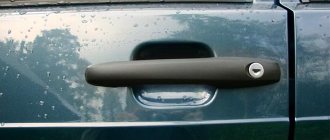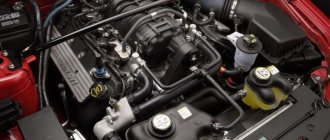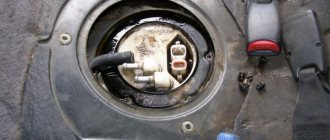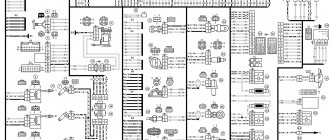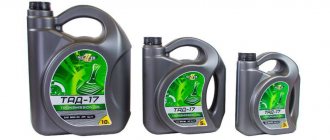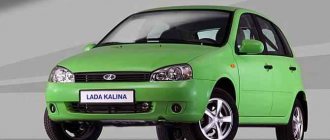The increasing frequency of natural disasters is the result of human intervention in the ecological balance. The main role in this is played by greenhouse gases, which have led to dramatic climate change. It is not surprising that scientists sounded the alarm and forced the governments of leading countries to pay increased attention to environmental issues, one of the aspects of which is the reduction of emissions of volatile gases. Since the 90s, regulations regarding the tightening of requirements for the composition of automobile emissions began to apply in Europe. This was achieved thanks to the introduction of a whole range of additives into the fuel composition. But since the real impact of the measures taken has been negligible, Euro standards are constantly being edited. Manufacturers of fuel for internal combustion engines are forced to keep up with these requirements, improving the quality of gasoline, primarily from an environmental point of view. But other performance characteristics of automobile fuel are not ignored. Modern additives make it possible to reduce fuel consumption and maximize the service life of power units. Until recently, this process was domestic, but through the efforts of the Lukoil concern, the matter got off the ground.
Why choose EKTO gasoline?
EKTO 92 gasoline: what is it?
The appearance of a product under the EKTO brand in the line of gasoline of one of the leading domestic motor fuel manufacturers in 2009 is truly an evolutionary step, since the first-born, EKTO 92 gasoline, turned out to be generally compliant with EURO-5 eco-standards. Many car owners are interested in what ECTO means in the name of gasoline. Everything turned out to be quite simple. Explanation of the brand name: EC - environmentally friendly, and TO, accordingly, - fuel. Initially, the quality of this product significantly exceeded the technical requirements determined by Gosstandart, meeting modern European environmental standards in most respects. This was achieved through the use of a special package of additives designed to provide a protective effect on all components of the fuel system, extending the life of the engine, and also reduce the concentration of particularly harmful substances in the exhaust gas.
Of course, the Lukoilites had no intention of resting on their laurels all this time. The production technology for ECTO 92 gasoline was improved, and soon fuel with an octane rating of 95 appeared at gas stations, and then a high-octane product - ECTO 100 gasoline, an analogue of EURO 98. Each of the above products is aimed at its own consumer. Possessing unique performance characteristics, ECTO gasolines are designed for use in any modern vehicles equipped with an internal combustion engine. All three types of fuel contain additives that have a whole bunch of positive qualities, from cleaning and detergent to anti-corrosion. The composition of ECTO gasoline contains five times less benzene and three times less sulfur than conventional fuel. This allows you to significantly reduce the concentration of carcinogens and sulfur compounds in the exhaust gas. The addition of environmentally friendly additives only strengthens the position of gasoline with the ECTO prefix in terms of the fight to maintain a clean environment.
Reviews
Artem: “I have a Ford Fusion, which has driven 140 thousand km on 92 AI. In this situation, I felt that problems with the injector would soon begin: the car was gradually losing dynamics. I decided to try ECTO to clean the engine a little, as the advertisement promised. To be honest, I expected a lot. I thought I’d fill the engine with new gasoline and solve all the problems. But no. After a month of driving only 92 Ecto Lukoil, consumption dropped slightly - from 8.8 to 8.3. It seems that the engine is pulling better. But this still did not save me from flushing the injector. Now I try to fill up a full tank of 92 ecto once a month for preventive purposes. And the rest of the time I drive a simple AI 92.”
Evgeniy: “In my 2010 Kia Rio with automatic transmission, I drove both the Ecto and the Euro for comparison. What can I say? The move on the ect is definitely smoother, and immediately after the transition. My “automatic” said “yes” to this fuel. On old gasoline it worked hard, but on Ecto 92 Lukoil there were no jerks, jolts, etc. And on the highway the car became noticeably faster. Then again I switched to a simple Euro and vibrations began when changing gears, roaring and so on.”
Differences between ECTO and EURO standards
The domestic oil refining industry has never been distinguished by its desire to meet global trends in terms of the quality of final products. For a long time, most refineries produced fuel that was far from meeting European standards. And having been supplied to the retail network, when reaching the final gas stations, it was subjected to manipulations that did not at all contribute to the improvement of consumer properties, be it diesel fuel or gasoline. But times are changing, and the market forces us to meet global criteria even in such a conservative area as oil refining. The appearance of ECTO gasolines is convincing evidence of such a trend. But what is the difference between ECTO gasoline (Lukoil) and EURO, which for a long time was a monopolist at Russian gas stations, and how significant are these differences? Let's try to understand this issue.
First, let's look at what the EURO eco-standard is, when it appeared and why it was introduced. As already noted, the environmental trend intensified significantly at the end of the last century, when it became obvious that human activity is one of the main causes of global climate change on the planet. But if it was not possible to reach a global consensus regarding emissions from industrial enterprises, then in the automotive industry successes turned out to be more significant, especially after the development of the EURO eco-standard, the requirements of which most automakers currently adhere to. However, initially the standard was valid only in the European Union. Most of the provisions of this document concern restrictions on the concentration of harmful and especially harmful components in automobile exhaust. Here is the chronology of the emergence of new, more stringent standards in relation to their predecessors:
- 1992 – the basic EURO standard was formed, receiving prefix 1;
- 1996 – emergence of EURO 2;
- 2000 – another tightening of requirements within EURO-3;
- 2005 – emergence of EURO-4;
- 2008 – transition of automakers to the EURO-5 standard.
If, according to EURO-3, the permissible concentration of sulfur in fuel was 150 mg/kg, then in the previous edition this figure was much higher - 500 mg/kg. Unfortunately, Russian gasoline producers were hopelessly behind their European colleagues. Thus, the transition to the EURO-3 standard took place 13 years after its adoption by the EU. The document itself regulates the content of a number of environmentally hazardous substances in gasoline, as well as the technical characteristics of the fuel: cetane number/index, flash point, concentration of sulfur, water, benzene, aromatic hydrocarbons.
Since all of the above doesn’t mean much to the average car enthusiast, it’s worth dwelling on this in more detail:
- the amount of benzene directly affects not only the toxicity of the gasoline itself - a significant part of it is also present in the vapors of burnt fuel. Another negative manifestation of an increased concentration of benzene is the appearance of carbon deposits in the cylinders, which reduces the efficiency of the power unit and reduces its service life. According to current environmental standards, no more than 1% benzene is allowed in EURO class gasoline (previously this figure was significantly higher - 5%);
- sulfur oxidizes during combustion to form sulfurous/sulfuric acid. Their impact on the components of the power unit cannot be called positive, especially for modern engines whose BCs are made of aluminum alloys. The adverse effects of acids significantly reduce the life of the exhaust system, including the catalytic converter. In the EURO-3 standard, a sulfur concentration of no more than 150 mg/kg was allowed; in EURO-4, the requirements were tightened to 50 mg/kg, and according to the latest edition, this amount was reduced to 10 mg/kg;
- aromatic hydrocarbons are substances that increase the purity, but at the same time lead to an increase in the formation of soot. Both rubber and plastic parts suffer from contact with such substances, since by their nature AC are solvents that can corrode seals, hoses, gaskets, filter elements, etc.;
- octane/cetane number. The lower this indicator, the faster the fuel burns. For this reason, the use of low-octane fuel causes detonation processes that have a negative impact on the engine's life, increasing smoke, leading to burning of valves and damage to pistons.
Advantages
ECTO contains a variety of additives, a whole multifunctional bouquet that enhances the anti-rust, detergent and cleaning effect. Among the advantages declared by the manufacturer:
- The motor runs smoothly;
- Its power increases;
- The operating life of the engine increases;
- The rust of the components is practically reduced to nothing;
- Engine oil change intervals are increasing;
- All fuel and engine elements extend their service life.
Advantages and disadvantages of the ECTO gasoline line
We have already mentioned most of the advantages of motor fuel from Lukoil, but it would be useful to list them all:
- ensuring more stable and reliable operation of the power unit;
- increasing the total service life of the engine and all its components;
- increase in engine power and efficiency;
- effective fight against corrosion;
- reduction of vibration/noise levels when the engine is running;
- increasing the regulatory time frame for replacing MM;
- reduced wear of injection system parts;
- extension of service life of CN;
- preventing the appearance of deposits in injector parts;
- more stable and trouble-free operation of diagnostic systems;
- more than threefold reduction in sulfur content compared to conventional fuel;
- fivefold reduction in sulfur concentration.
Note that all these advantages will be most noticeable on cars with low mileage. For power units of venerable age, at the initial stage of using new gasoline from Lukoil, minor deviations in operation may be observed due to the action of detergent additives. The fact is that modern effective additives are capable of dissolving a significant part of the deposits, which, when entering the fuel filter, will accumulate in it, reducing the fuel supply. Therefore, it is recommended to replace the fuel filter element soon after using eco-fuel. It is this action that is considered the main disadvantage of the ECTO gasoline family. However, no one is stopping owners of used cars from using this fuel periodically, only to clean the fuel system. In this regard, it has no equal among its domestic analogues. Owners of relatively new cars are mostly satisfied with gasoline. In principle, in the medium term, the entire domestic vehicle fleet will have to meet European environmental standards, which, with difficulty, are taking root on our roads.
About detergent additives
Detergent preventive additives make up about 5 - 7% of the volume of gasoline 92. Their composition is a trade secret, but it is known that the main one is MTBE (methyl trebutyl ether), which is used to regulate the octane number. Also used in Lukoil fuel, KEROPUR 3458N complexes produced by BASF contain:
- Solvents for better drainage of liquid from valves.
- Demulsifiers and inhibitors to prevent corrosion.
- Friction modifiers to reduce energy losses.
The increase in power after regular driving of the Ecto 92 is due to the fact that more combustible mixture flows through the cleaned channels and valves, and combustion is more intense.
Which is better: ECTO or EURO gasoline
In principle, both motor fuels comply with European eco-standards, which require the use of a wide class of additives. So the answer to the question of which gasoline is better, ECTO or EURO, largely lies in the area of personal preference. Many experts note that for new cars the use of domestic fuel is more preferable, although in terms of cost, imported gasoline is slightly cheaper. If you have a machine with a long service life, it is recommended to use EURO-95, since the presence of detergent additives in its composition is minimal. The use of gasoline from Lukoil in two-stroke engines, according to experts, will also not provide significant advantages.
A little history
Lukoil is a brand that is so loved by car owners around the world. It has existed in our country since 1991. There is a branded gas station in every city. Lukoil engineers annually introduce innovative developments in fuel production. Gasoline from Lukoil has always been considered the standard of quality. It is chosen by owners of expensive cars, and it fully complies with the requirements of the European standard.
EKTO 95 gasoline went on sale in April 2006. At first, car owners were afraid to purchase a new, previously unknown product. However, the price of 95 Lukoil gasoline did not differ from regular gasoline, and buyers began to buy it more and more often. Very soon people appreciated the quality of the new fuel and switched to it.
Results
Despite the approximate similarity of the characteristics of EKTO and Euro, the first type of fuel proved to be better in operation. Its use has made it possible to reduce noise levels and fuel consumption, eliminate problems with spark plug contamination, improve vehicle dynamics, and so on. This effect is primarily achieved through the high-quality selection of additives that have a positive effect on the power unit of the car.
At the same time, we should not forget about another important point - price, which for many car enthusiasts is a key factor. ECTO will cost more, but here everyone makes a decision personally.
Market conditions
Reasons for increased fuel consumption. why is fuel consumption increased?
It is significant that Lukoil began to market diesel fuel of the highest European standard, and not gasoline. The quality of gasoline in general in the country is beginning to “catch up” to European standards. This was required by the vehicle fleet, which has been greatly updated in recent years. But the diesel fuel market is distinguished by a very wide palette: from quite decent fuel to archaic diesel fuel that complies with GOST 1982, which has not yet been canceled.
For example, the Ukhtinsky Oil Refinery (Komi Republic) could have launched Euro-5 diesel fuel on the market a long time ago, but consumers, primarily railway workers, are asking: give them better simple diesel fuel. That is, in this region, high-quality diesel fuel is still in little demand on the domestic market.
Oil at $50 a barrel
Lukoil admits that the price of oil in 2022 may reach or exceed $50 per barrel.
“Based on what we are seeing in the markets, there is a high probability that in 2022 the price could reach $50 per barrel and exceed this level. But for budgeting purposes we use lower prices. We use different scenarios, but $50 is not in them,” he said. At the same time, Palivoda noted that this particular price target has been the base price for the company since 2022.
In the longer term, there is reason to expect higher oil prices. “Demand is recovering, but not everywhere quickly. It will likely take until the end of 2022 for demand to recover to pre-crisis levels. But let me note again that we are already seeing a shortage in the oil market, which is why reserves are declining faster,” he said.
At the end of 2022, Lukoil approved the company’s medium-term development plan for 2018-2020, as well as a long-term strategy for 2018-2027.
On the way to the South: which gas station on the M4 highway is better to refuel in the summer
To meet the sea you have to pass through the Tula, Voronezh, Rostov regions and Krasnodar region. In the vicinity of Tula, the situation with gasoline and diesel fuel is absolutely similar to Moscow. When climbing closer to the South, follow the all-Russian guideline for AI-95:
- Voronezh region: Gazprom (Astrakhan plant) and Rosneft (Ryazan oil refinery).
- Rostov outskirts: Gazprom (Astrakhan oil refinery), Shell franchise (purchases from the Saratov oil refining company), Bashneft (Ufa oil refinery).
- Krasnodar region: Gazprom (Astrakhan facilities) and Rosneft (Saratov plant).
Read also: Toyota Vista Ardeo 1999
Based on the stories of travelers, we found out which gas station is best to refuel within the transit areas. This is Gazprom. Although they are quite underfilled, the car drives as expected.
Advice. When leaving Moscow, plan to refuel after about 200 km. Gas stations 300-400 km from the capital are often overcrowded with cars, since the tank is empty by this mileage.
In Russia as a whole: rating of large gas stations by gasoline quality in the central part of the Russian Federation
Our area of interest is heavyweight wrestling. Interregional giants Rosneft, Lukoil, Gazprom with their oil refining plants are actively competing with the “outbidders” - Tatneft and Shell. Small networks are out of review. Guests prefer to avoid intra-regional LLCs.
Based on surveys of drivers in the Central Federal District, we determined which gas station has the highest quality AI-95 gasoline. This is a semi-state Gazprom. The remaining networks are popular in descending order:
Read also: Mobile radio for truckers
There is only one clear outsider - completely private Lukoil. 95 EURO from time to time does not exactly meet the points of the Technical Regulations of the Customs Union on fuel. In fact, the car either drives or doesn’t drive, giving a Check Engine light. There have been complaints about Tatneft gasoline regarding poor starting and stalling when cold in the cold, which indicates problems with volatility. In the diesel fuel category, they mostly deviate from winter standards. There are no malicious violators. There are gas stations that neglect incoming controls, and production facilities sometimes fail. In the winter, the semi-state Rosneft and its BP network were caught in this situation more than once.
Under the guise of Arctic diesel with a waxing temperature of -27°C, summer diesel fuel was poured into the tank, from which paraffins precipitated at -5°C. You can insure yourself - for example, by heating the fuel tank or installing a fuel filter heater.
The main flaw of foreign Shell is franchisors, who sometimes let the quality down. Officials are only in Moscow and the region, and in the regions they are simply purchased signs. Hence all the complaints. Some do not feel the difference between V-Power and a regular “fifth”, others – between 92 and 95. The winter washer is of high quality, but you shouldn’t neglect how much anti-freeze you pour into the tank.
Freeze resistance
One of the key complaints Russian drivers have about cheap diesel fuel is the following: in cold weather, a diesel engine does not start well. As the practice of using diesel fuel of the Euro-4 standard has shown, during the cold period car owners do not have problems with this type of fuel. Experts assure that Lukoil's EKTO Diesel products in winter also guarantee easy engine starting at any temperature.
In cold weather, the performance of diesel fuel is determined by a depressant-dispersant, that is, a diluting additive. The temperature range of use of the “fuel” depends on its concentration, this also applies to the product (“EKTO Diesel”). The freezing point depends on the fuel class. In accordance with the requirements of the Russian standard of 2005, in different regions of the country, the company we are considering offers winter diesel engines of different classes - from the first (with a temperature of use up to -26 degrees), to the fourth, which operates even at -44 degrees.
Possible disadvantages of use
In the end, according to modern road rules and the requirements of various regulatory organizations, all cars will have to switch to such fuel that meets environmental standards. Well, in the meantime, what are we seeing in this context? The popular opinion about ECTO gasoline is very ambiguous.
Among users of elderly “classics” VAZ or other brands of the domestic automobile industry, which have traveled more than one thousand kilometers, there are generally horror stories about this fuel. Like, I filled it in to try it, but in general I barely made it home: all the dirt went into the filter and further, the engine began to actively sneeze, and the pipes were cracked. And some even use old engines, but they say that nothing special has changed in the character of the car, and the traction is even worse than on an ordinary TNK-92, only the spark plugs are clean (this, by the way, says a lot).
Some advise pouring EKTO periodically, in bursts, to clean the entire system, and then use regular gasoline. People who have bought new modern cars are quite satisfied with the quality and fuel consumption.
Economical
Thanks to Lukoil's policy, fuel labeled "EKTO" will cost you the same price as regular fuel. Yes, EKTO 100 from Lukoil is slightly more expensive than EKTO 98. But if you make simple calculations, it becomes clear that its use is much more economical. The issue of the financial part is unique for each brand of car, but here is a small example of savings: when refueling AI-100 in Renault Logan with a consumption of approximately 8 liters per 100 kilometers, we will spend 322 rubles for this distance. With a similar amount of AI-98 fuel, refueling will cost 317 rubles. But since “EKTO 100” is 5% more economical, then in terms of conversion it will be 305 rubles for 8 liters of premium gasoline.
So does it make sense to save on your car? After all, high-octane fuel is more profitable in the long term. You just need to calculate how much you will save on engine and car repairs. After all, if EKTO 100 from Lukoil is poured into powerful cars from the very beginning, their engine will retain its original condition for many years. Don't forget this.
Overtaking time
Historical fact: the first batch of low-sulfur diesel fuel that complies with Euro-5 was produced by the Perm Lukoil refinery in 2004. This became possible after updating technological equipment and introducing methods of deep oil refining. However, innovative products of the highest quality were mainly shipped to the countries of the European Union, where the unbranded analogue of Lukoil, EKTO Diesel, was actually shipped. Feedback from foreign partners was very positive, the product was in demand. The Russian consumer was deprived of the opportunity to use new generation diesel engines.
As they say in the administration, Lukoil has overtaken “local time”. Such a high fuel standard at that time was completely useless for the country's diesel fleet. A product of this quality would not burn completely in the cylinders of old cars, because fuel and engine standards must be correlated.
Where they underfill: rating of gas stations by underfilling
Keeping a paid liter or two on the balance sheet of a gas station is a completely familiar goal that is usually set for gas stations. If you don’t want to be deceived, demand that there is no human contact with the gun while pouring fuel into the tank. Another option is to avoid visiting gas stations with dishonest intentions.
The black list includes those who like to add extra 0.5 liters or more:
- Gazprom and Gazpromneft.
- Route.
- Neftmagistral.
- Tatneft.
- Rosneft.
- B.P.
Any of the ESA gas stations is distinguished by transparent accounting of the displacement count in Moscow. Shell and Lukoil also do not suffer from dependence on black money - even in the regions the counter counts what it has.
Map on the Lukoil website
To make it convenient for AZS Lukoil customers, the organization has placed a map of gas stations on its website.
On it you can easily find all gas stations located on the territory of the Russian Federation. There is a scrolling system that allows you to zoom in or out of the view. In addition, the service provides some other amenities. For example, the Magnifying Glass icon allows you to configure a search filter based on several parameters. You can set the necessary characteristics:
- exact address or route number;
- payment method;
- nearest Lukoil gas stations (gas stations near you);
- operating mode;
- specialized stations: automatic, dispensers, for water transport;
- by fuel type (petrol, gas, diesel);
- availability of additional services (WC, cafe, technical training center, etc.).
Need gas prices right now? Here you go: The cost of gasoline and diesel fuel Lukoil for today!
You can also select the icon of a specific gas station from the Lukoil network on the map of Russia and view detailed information. It appears as an icon with a tooltip that pops up when you hover over it. At the same time, some of the buttons are active:
- “Gas station No...” will redirect you to a page with a detailed description of the gas station.
- “Build a route” allows you to open a form for building a route by selecting more than 3 points on the map.
- The “Hotline” contains a feedback form in which the station number is indicated in advance and the topic is “Quality of the station’s work.”
There are also other useful buttons next to the Lukoil LLC map. With their help you can:
- write to support;
- find out useful information from the “Frequently Asked Questions” section;
- add the most convenient gas station to “Favorites”.
